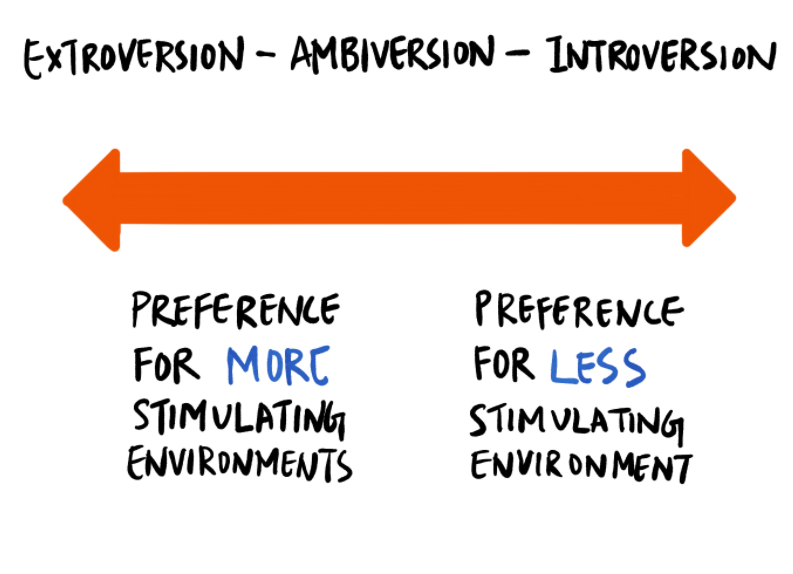The Space In Between
According to the Myers Briggs Test, everyone in the world can be categorized into two definitions: introvert or extrovert. The classic, stereotypical introvert is as many know to be the antisocial, quiet wallflower who prefers to be with themselves rather than with their fellow human beings. On the other end of the spectrum, we have the happy, talkative, outgoing life of the party – the people who could never dream of being alone. Of course not everyone is 100% extroverted or 100% introverted, and countless people do not act like their clichés. Nevertheless, there are many who certainly have more qualities and tendencies of one side of the scale than the other.
What about those who are like both? Those who have equal (or pretty close to) qualities, and don’t necessarily fit into either denotation. The ones who enjoy their alone time, but are also comfortable in social settings. This, my friends, is called an ambivert. While mostly unheard of, ambiverts take up 68% of the population. They could be the people you walk by in the grocery store, the people you sit by in class, the people in your own home… or even yourself.
Don’t know if you are one? Here are 5 qualities of an ambivert I have noticed:
They’re adaptable. Depending on who they’re with and the situation they’re in, ambiverts know how to change their personality, emotions and behavior. For example, if one ambivert found themselves having to work in a group project with quieter, more introverted peers, this ambivert would become more talkative, or even the “leader” of the group to get the project done. However, if the ambivert were to find themselves with a group of extroverts, they would become quieter, allowing others to take charge.
They provide balance. With having both qualities of introverts and extroverts, it’s easy to find where they fit in. An ambivert’s adaptability helps in these cases when they can provide a much needed balance to a social dynamic, whether they are lingering back to let others shine, or breaking an awkward silence to let introverts feel more comfortable.
They’re satisfied in whatever they’re weekend plans are. It may be going to a party late Friday night, or staying home to binge their favorite TV shows all weekend. Ambiverts are content with whatever the scenario is.
They’re good communicators. As extroverts like to talk more often, and introverts like to listen and observe, ambiverts usually have just the right amount. They have a distinct intuition of whether or not it is time for them to speak, or time for them to listen, allowing them to carry on deep one on one conversations or small talk with whomever it may be.
They can empathize easily. Since they have qualities of both introverts and extroverts, ambiverts can understand both quite effortlessly, know when to listen, and may ask questions to help the situation, rather than just giving advice.
Now, I’m not saying you need to have all of these qualities to be considered an ambivert. You could even have some of these and not be one. You could find the whole idea of ambiverts silly, as yet just another attempt of defining someone.
I like to think of ambiverts, though, as the bridge to link the vast canyon amongst extroverts and introverts, uniting everyone despite the diversity. Someone to fill the space between.




